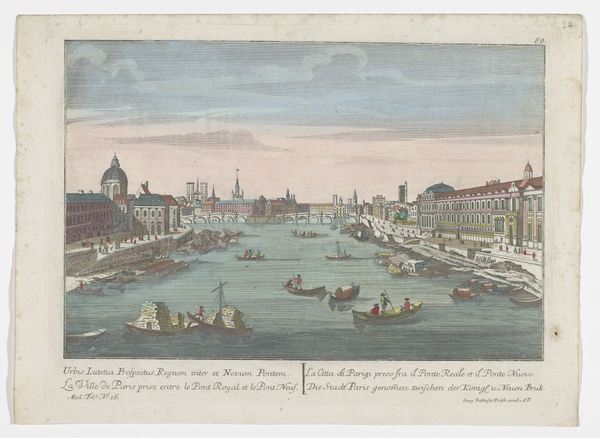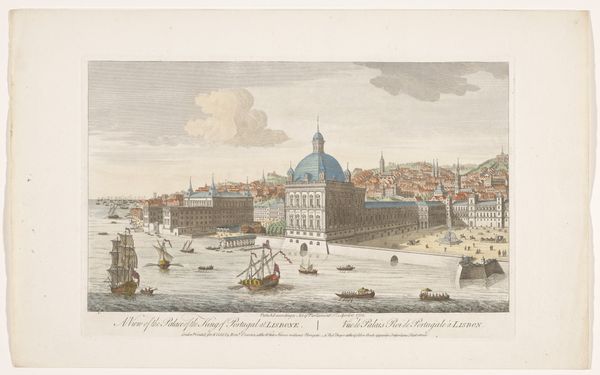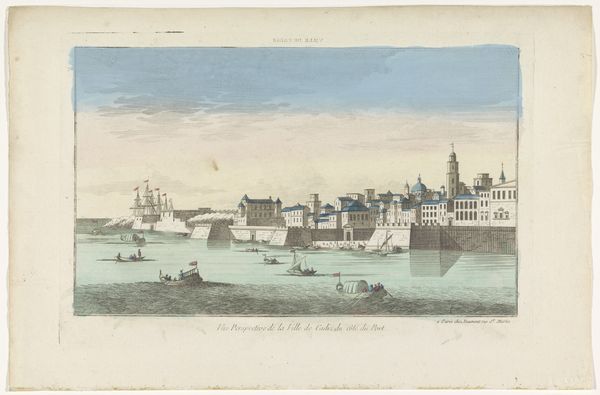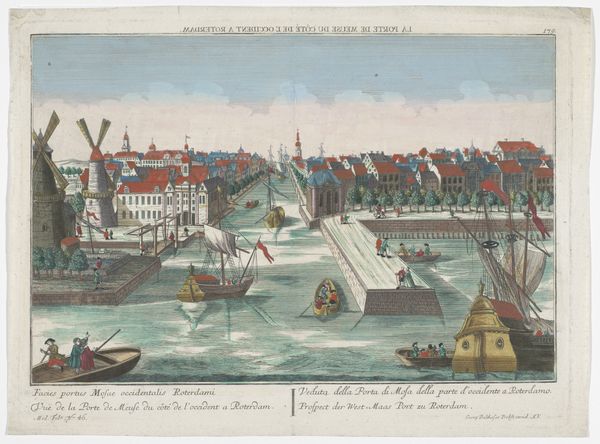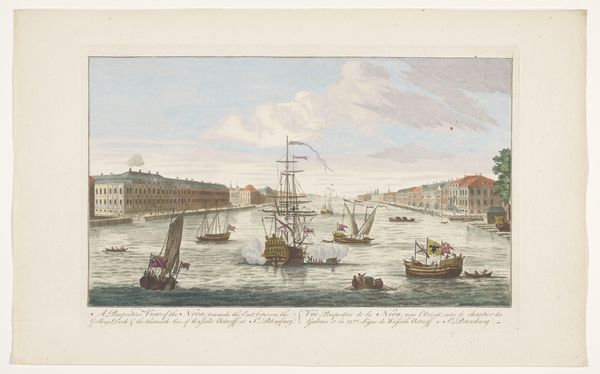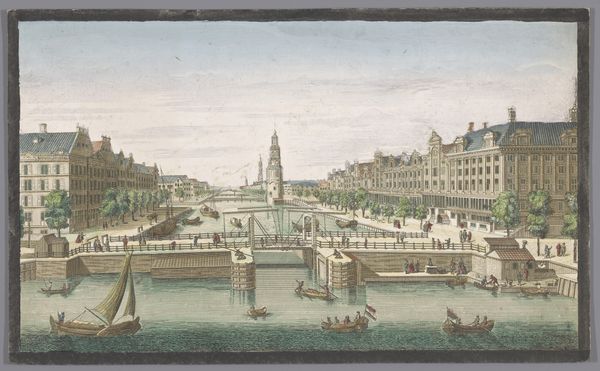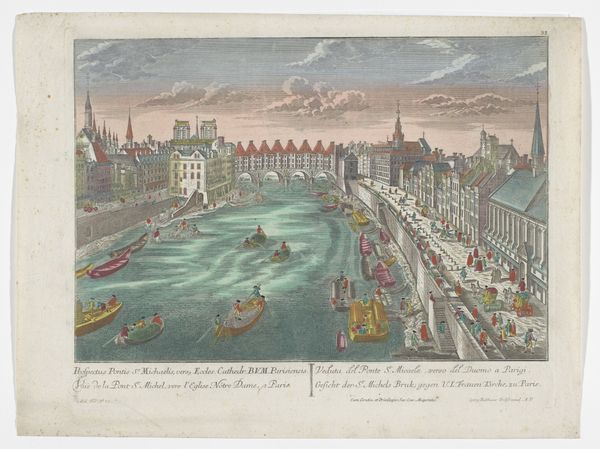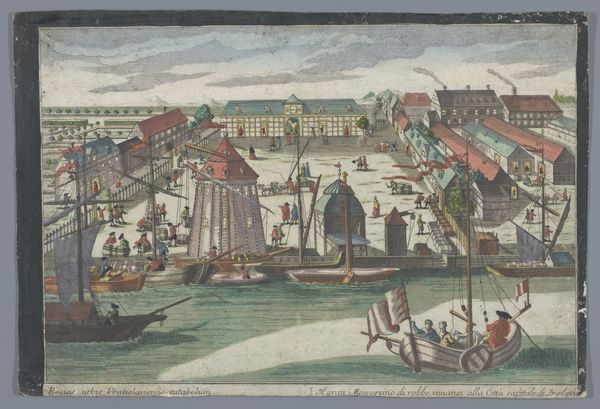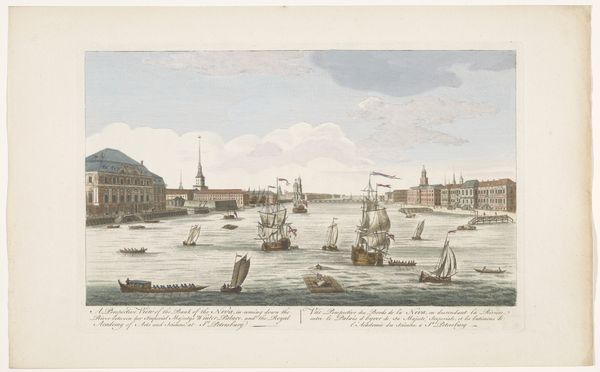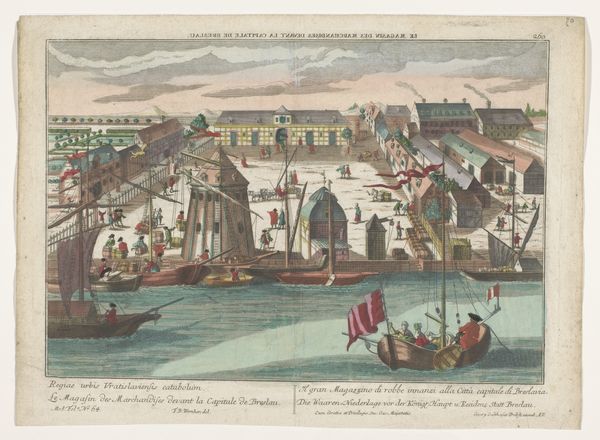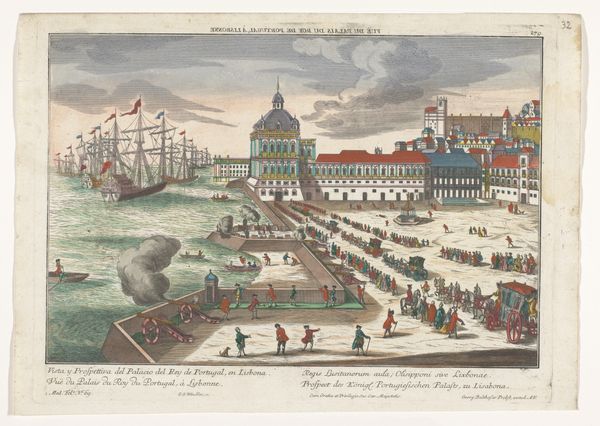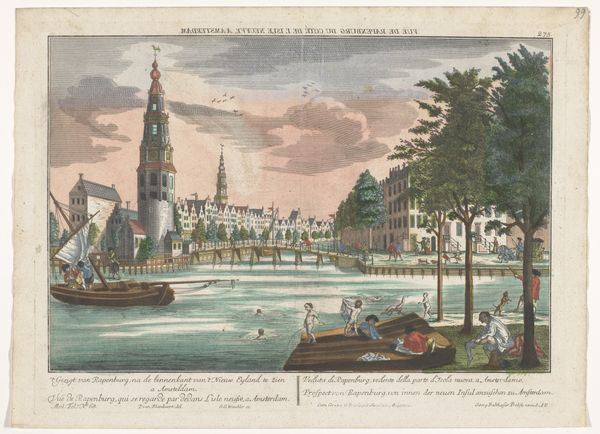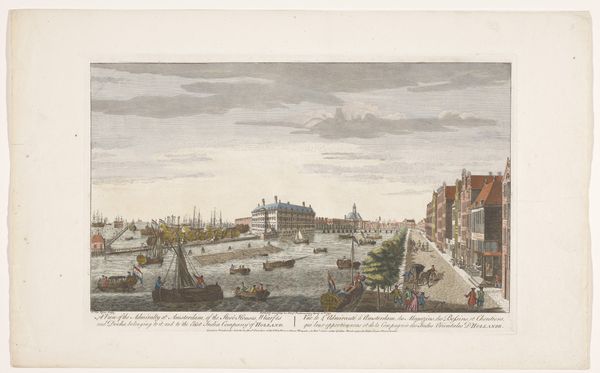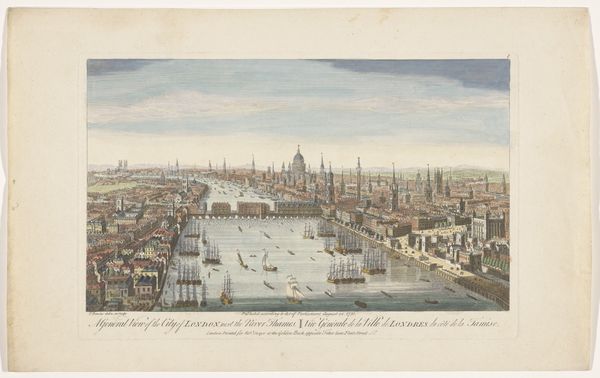
Dimensions: height 318 mm, width 432 mm
Copyright: Rijks Museum: Open Domain
This print of the Royal Palace in Lisbon was made by Georg Balthasar Probst, around the mid-18th century. It is an engraving, meaning that the image was incised into a metal plate, likely copper, with tools like burins and etching needles. The fine lines created by this process allow for incredible detail, which has then been enhanced with the addition of color. Look closely, and you can see the individual marks of the engraver's hand. The act of engraving, and the later printing, would have been painstaking manual work. Prints like this one were luxury commodities, consumed by a growing middle class eager to collect images of far-off lands. Lisbon, in particular, would have been seen as a rich and exotic port city, central to global trade routes. Consider the labor involved in extracting the metal, transporting it, and processing it, as well as the work required to produce the print itself. Paying attention to these processes, and the economic systems that supported them, helps us understand the full social context of this seemingly straightforward image.
Comments
No comments
Be the first to comment and join the conversation on the ultimate creative platform.
